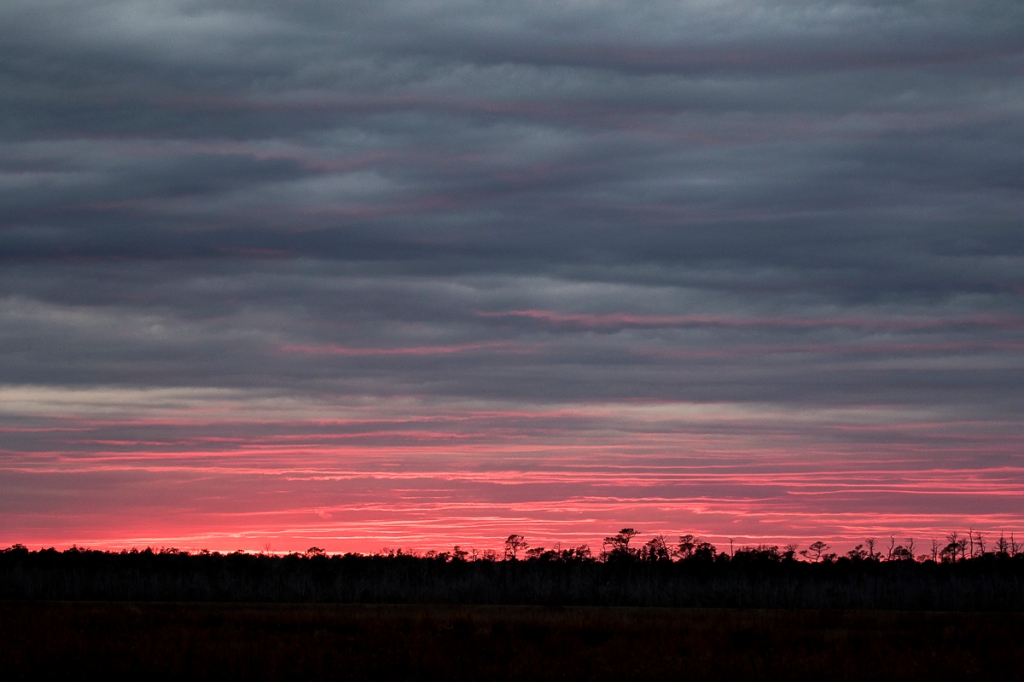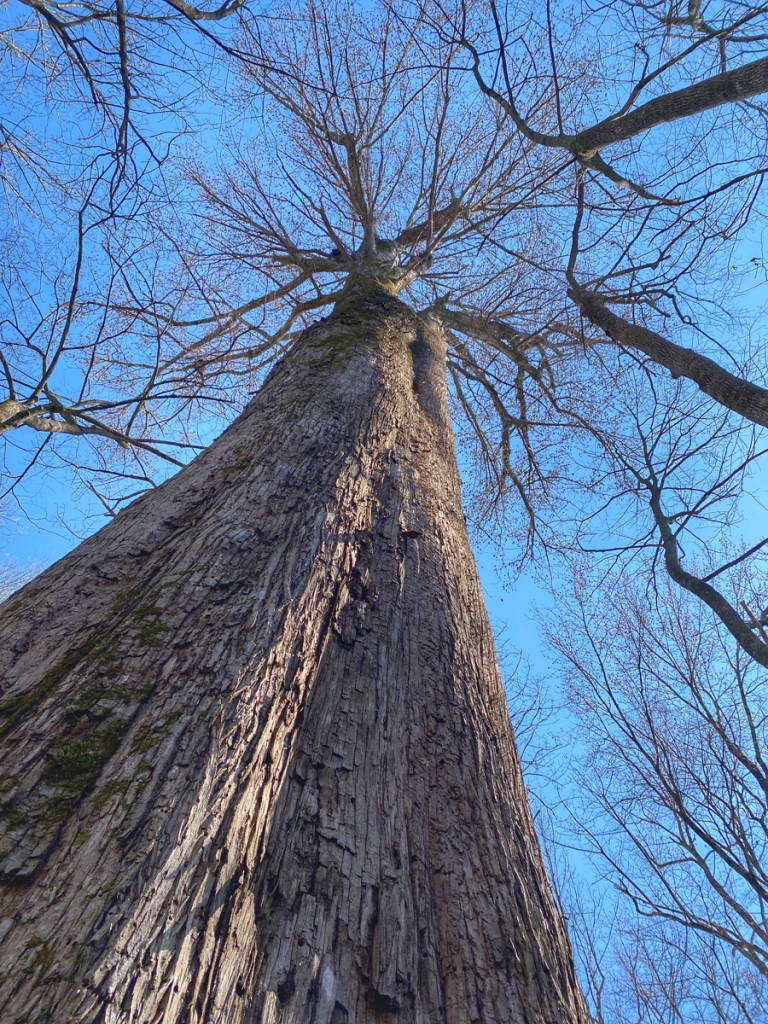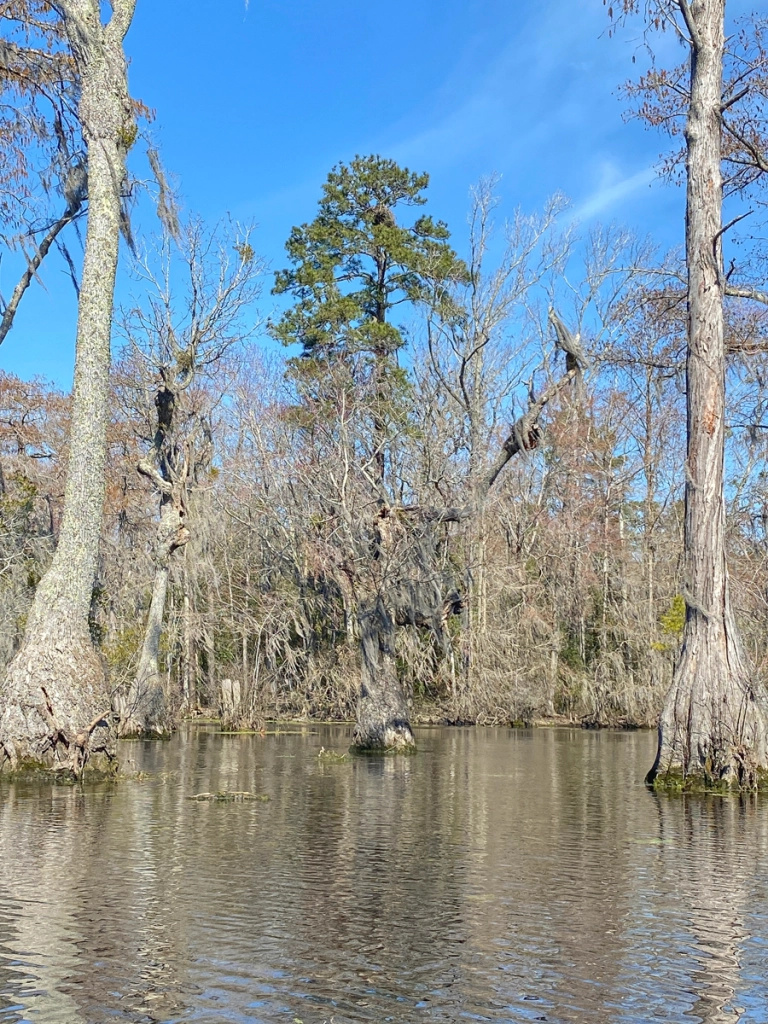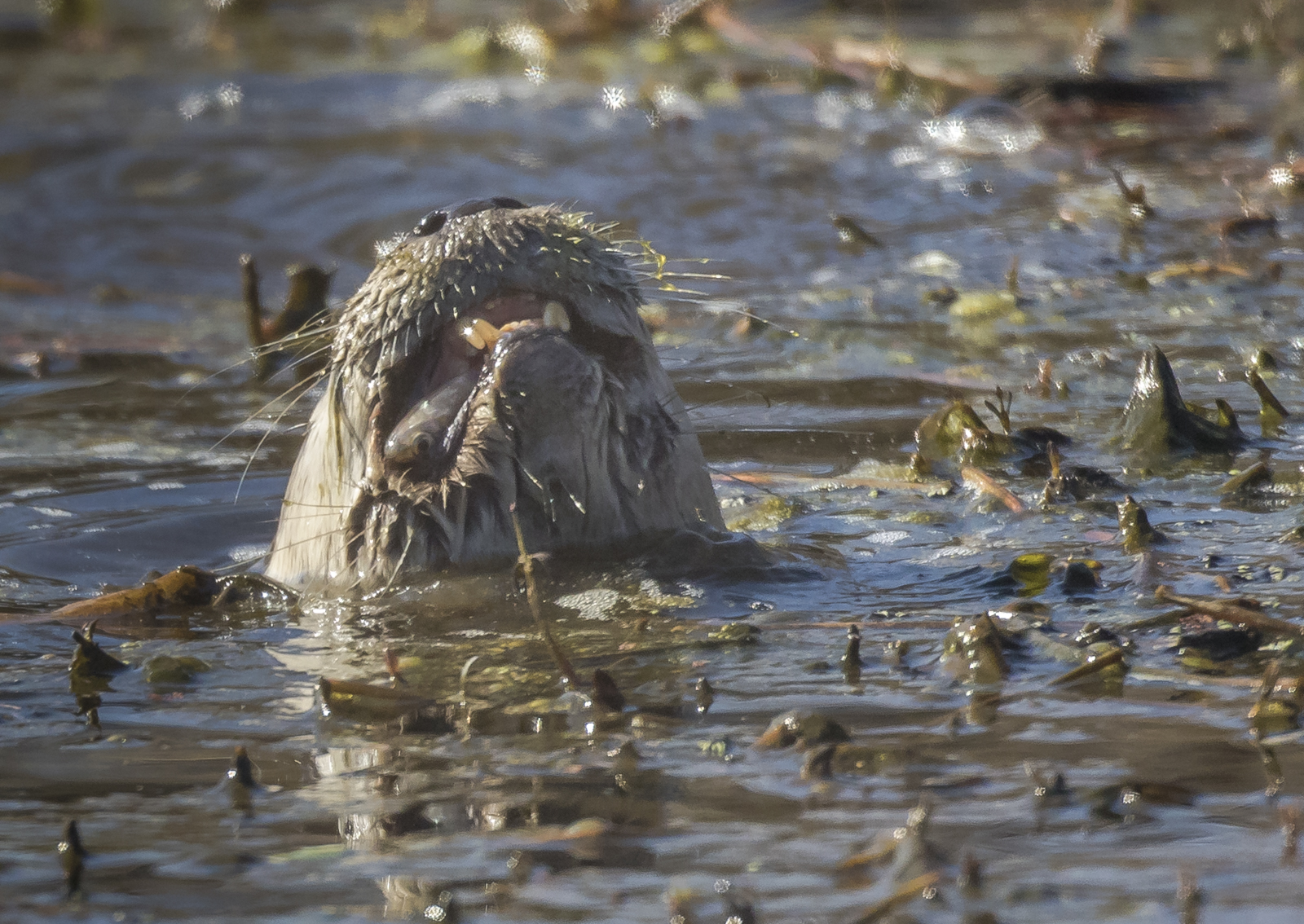We need the tonic of wildness, — to wade sometimes in marshes where the bittern and the meadow-hen lurk, and hear the booming of the snipe; to smell the whispering sedge where only some wilder and more solitary fowl builds her nest, and the mink crawls with its belly close to the ground.
~Henry David Thoreau
I had the pleasure of spending a couple of days earlier this month with some friends visiting some of our wonderful wildlife refuges. We had originally planned to go to the Pungo Unit of Pocosin Lakes National Wildlife Refuge, but due to heavy rains, the roads became impassable and the decision was made to temporarily close the area. So, we decided to visit two other refuge units – Mattamuskeet and Alligator River.
We spent the first afternoon at Mattamuskeet, scoping the impoundment on Wildlife Drive where hundreds of ducks, geese and swans were resting and feeding. Lunch by the lodge gave us time to appreciate the elegance of a Great Egret perched in a tree across the canal.

Great Egret assumes an elegant pose (as always) (click photos to enlarge)
One of my favorite things to do at Mattamuskeet is spend some time on the New Holland Trail boardwalk. It passes through a cypress swamp with beautiful lichen-covered trunks, abundant cypress knees, and mind-bending reflections.

A thin layer of ice added to the swamp scene along the boardwalk

A Red-bellied Woodpecker adds her reflection to the swamp’s black water mirror

Which way is up? I can’t help but take some reflection photos every time I visit this trail
As we walked back to the car we spotted what looked like a raptor pellet on the ground. It was smaller than most Great Horned Owl pellets I have seen. and contained some feathers, but of what type of bird? A duck perhaps?

A raptor pellet with some mystery items…any guesses?
I always try to find American Bitterns at Mattamuskeet, and though there were none in sight on this afternoon, the weather and sky provided a beautiful backdrop for a great afternoon of wildlife observation

.Moonrise along Wildlife Drive
Early the next morning we were off to Alligator River NWR, hoping to see a variety of wildlife, though a special request had been put in for otters. It didn’t take long to fulfill that wish…

A River Otter runs across the road ahead of us, lugging its breakfast
Though there were not as many waterfowl as we had seen at Mattamuskeet, we did get some great looks at several species.

Mallard drake showing off that stunning green head

A pair of Tundra Swans cruising one of the flooded fields along the road
We soon spotted a pair of otter swimming toward us in a roadside canal. We got out and sat alongside the canal and watched as these two swam and dove together, one catching a fish, and then one swimming close by giving us the eye. We spent several minutes enjoying the antics of this pair before they finally tired of us and swam out of sight.

A River Otter swims by giving us the eye (and a great reflection)
We drove slowly along the fields, hoping to see a Red Wolf or Black Bear, but we were rewarded instead with numerous raptors, Great Blue Herons, and a truly unexpected treat – a Mink! We were out of the car looking at something out in the field when a car passed by and slowed to a stop just beyond us. I looked up and saw something run from the field and cross the road just in front of that car. It resembled a small otter but had a bushier tail, and it was carrying something. My brain said Mink as it disappeared into the canal, but I wasn’t sure. We drove down and looked, seeing nothing at first. Then there was a ripple and out swam a Mink, carrying what looked like a small rodent.

A large Mink swimming along the canal edge
We watched and followed along as the Mink swam a few feet, darted back into the vegetation along the canal edge, and then would reappear. It repeated this for a couple of minutes until finally vanishing into some thick brush. Before it disappeared it paused nicely and stared at us while holding its future meal. I had brought two cameras and two telephoto lenses on the trip. I let Daniel use the 500 mm telephoto lens while I was using Melissa’s 100-400 zoom. We both managed a couple of quick shots when the Mink looked straight at us. I must admit, Daniel did a great job hand-holding that big lens and getting a fine shot (once again, me jealous??).

The Mink pauses for a few seconds and I get this shot as it stares right at us

Daniel gets a superb photo of the Mink and its prey. We are guessing it is a Hispid Cotton Rat but welcome any other thoughts (photo by Daniel Tregeagle)
Over the years, I’ve seen fewer than a dozen Mink in the wild, and this was by far the best sighting of one, and it had a prey item!
At one stop we played cat and mouse with an elusive Belted Kingfisher. These birds are notoriously difficult to photograph as they tend to fly well before you are in decent camera range. This male (lacking the rust-colored breast band of females of the species) kept flying back and forth from in front of the car to behind as we traveled one section of road, finally allowing each of us to get a few images.

Belted Kingfisher male

A Pileated Woodpecker playing hide and seek on a tree trunk
We ended the day with eight River Otter, a very good day of sightings for this fun-loving species. Our last otter was a sleepy one. It slid off the bank where it had been napping and then lazily lounged in the water, eyes half-closed. We watched it for several minutes as it slowly moved along the bank and then let it be.

River Otter sliding off the bank into the water with barely a ripple

The otter seemed very sleepy as it drifted in the water, eyes closed
We missed seeing a bear or wolf but were lucky to enjoy plenty of otter and an amazing view of a Mink after a successful hunt. This is why you visit these public lands and do so as often as you can…you just never know what amazing sights you may see.

























































































































































